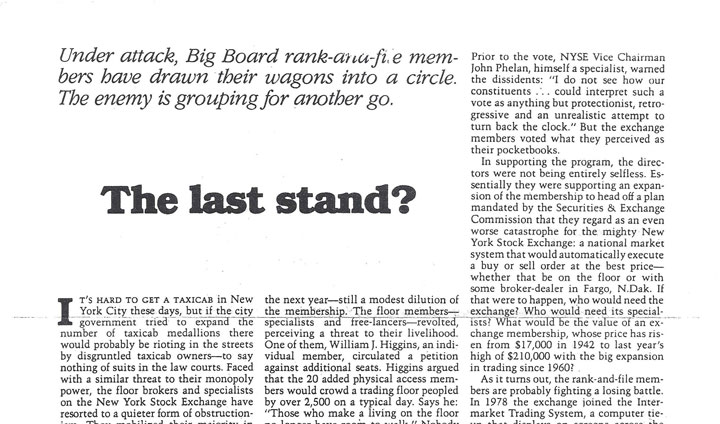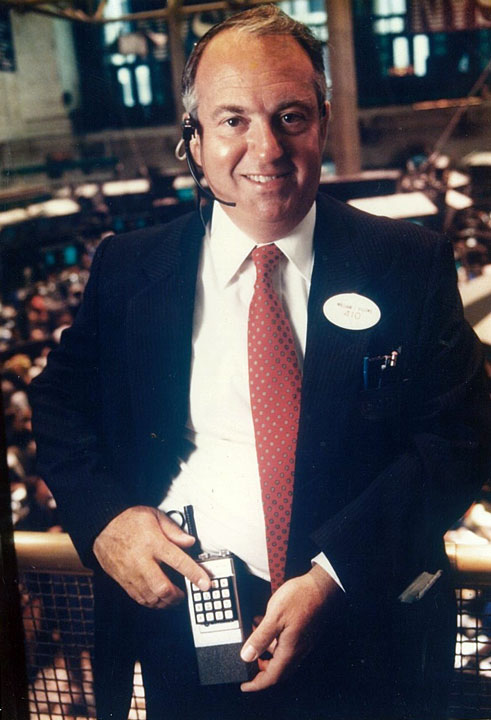Earlier this year, retired NYSE trader William Higgins tried to buy a seat in his wife's name when the seats were fetching about $1 million. But as he and his wife Beth were waiting for her fingerprints to be cleared by authorities, seat prices moved up to about $1.4 million. Mr. Higgins decided that was too steep.
IT'S HARD TO GET A TAXICAB in New York City these days, but if the city government tried to expand the number of taxicab medallions there would probably be rioting in the streets by disgruntled taxicab owners - to say nothing of the suits in the law courts. Faced with similar threat to their monopoly power, the floor brokers and specialists on the New York Stock Exchange have resorted to a quieter form of obstructionism. They mobilized their majority in the Big Board's membership to block a proposed modest increase in the number of available seats.
This happened in November but the struggle over wider access to the exchange floor is still going. Essentially it is between those who defend a narrow privilege - damn the ultimate cost - and those who want to defend a narrow privilege-damn the ultimate cost-and those big NYSE members who want to make concessions in the interest of preserving what they consider the exchange's longer-term future
Here's the story: In 1977 at the urging of the exchange's director's, the exchange voted to permit annual memberships as a supplement to the 1,366 owned seats. The program was strongly supported by such brokerage industry leaders as Robert H.B. Baldwin of Morgan Stanley. Some the ultimate cost - and those big NYSE members who want to make concessions in the interest of preserving what they consider the exchange's longer-term future.
Original: For an NYSE seat, stand in line

